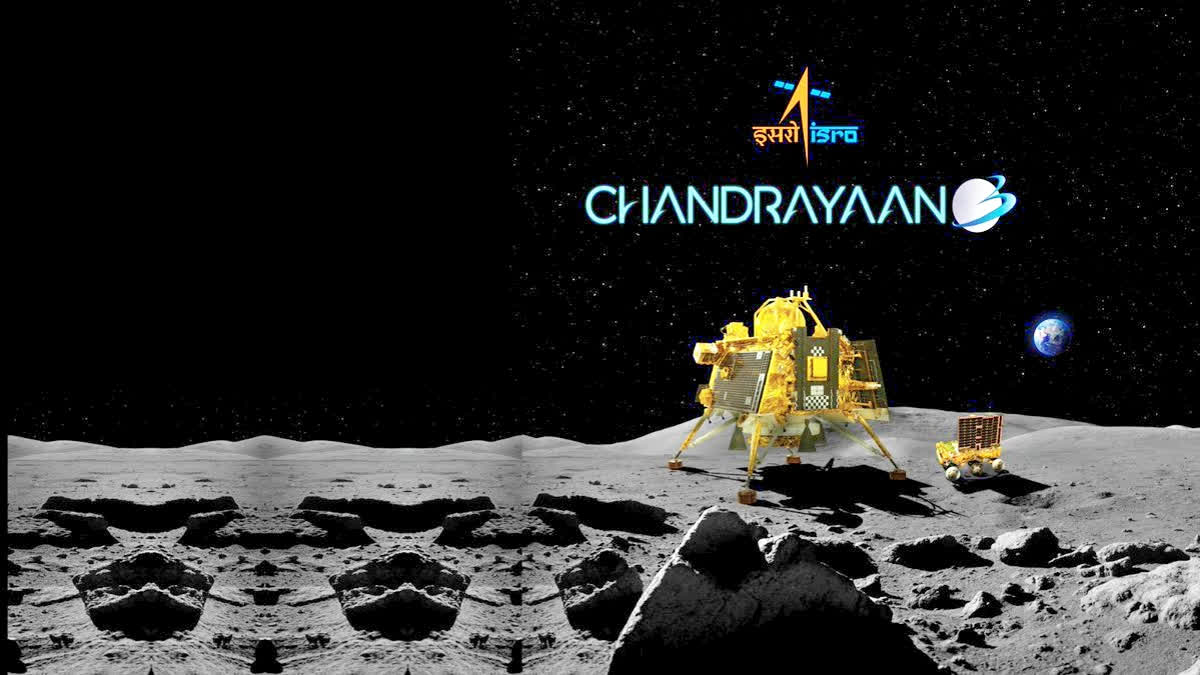Bengaluru: With dawn breaking on the Moon, ISRO is now gearing up to try to reestablish communication with its lunar mission Chandrayaan-3's solar-powered lander Vikram and rover Pragyan, to revive them so that they can continue with scientific experiments.
Both the lander and the rover were put into sleep mode earlier this month on September 4 and 2 respectively, ahead of the lunar night setting in on Earth's only natural satellite. So, if ISRO is able to revive them as the Sun rises on the Moon again, information that is derived from experiments that could once again be conducted by the Chandrayaan-3 payloads would be a "bonus".
With sunlight back on the south polar region of the Moon, where both the lander and rover are located, and their solar panels expected to be optimally charged soon, ISRO is now slated to make efforts to establish contact with them again, check their health and ability to resume functioning and try to revive them.
"We have put both the lander and rover on sleep mode because the temperature would go as low as minus 120-200 degrees celsius. From September 20 onwards, sunrise will be going on at the Moon and by September 22 we hope that the solar panel and other things will be fully charged, so we will be trying to revive both the lander and rover, " ISRO's Space Applications Centre Director Nilesh Desai told PTI.
"If our luck is good, we will have the revival of both lander and rover and we will get some more experimental data, which will be useful for us to further carry out the investigation of the Moon's surface. We are eagerly waiting for activity from September 22 onwards. We hope that we are lucky enough to revive both lander and rover and get some more useful data," he said, adding that whatever data they get hereon would be a bonus.
Also read: Space missions inspire children to become scientists, says Rajnath Singh on success of Chandrayaan-3
After landing on the Moon, both the lander and the rover, and payloads onboard had performed experiments one after the other so as to complete them within 14 Earth days (one lunar day), before pitch darkness and extreme cold weather engulfed the Moon.
The lander and rover -- with a total mass of 1,752 kg -- were designed to operate for one lunar daylight period (about 14 Earth days) to study the surroundings there. However, ISRO is hoping that they will come back to life when the Sun again rises on the Moon, and carry on with the experiments and studies there.
"The Vikram Lander is set into sleep mode around 08:00 Hrs IST today... Payloads are now switched off. Lander receivers are kept ON. Vikram will fall asleep next to Pragyan once solar power is depleted and the battery is drained. Hoping for their awakening around September 22, 2023," ISRO had posted on social media platform X on September 4.
Earlier on September 2, after putting the rover into sleep mode, ISRO had said, "The rover completed its assignments. It is now safely parked and set into sleep mode. APXS and LIBS payloads are turned off... Currently, the battery is fully charged. The solar panel is oriented to receive the light at the next sunrise expected on September 22, 2023."
"The receiver is kept on. Hoping for a successful awakening for another set of assignments! Else, it will forever stay there as India's lunar ambassador," the country's space agency had said in a post on X. The lander touched down near the south pole of the Moon on August 23, successfully completing one of the Chandrayaan-3 mission's main objectives of soft landing on the lunar surface.
Subsequently, the 26 kg six-wheeled rover descended from the lander's belly onto the Moon's surface, using one of its side panels, which acted as a ramp.
Noting that as long as the sun shines, all the systems will have their power, ISRO Chairman S Somanath had earlier said, "The moment the sun sets, everything will be in pitch darkness, the temperature will go as down as low as minus 180 degree Celsius. So it is not possible for the systems to survive, and if it survives further, then we should be happy that once again it has come to life and we will be able to work on the system once again."
He said, "We hope it would happen that way." If the payloads are successfully switched on again, ISRO will be undertaking the same set of experiments it had conducted on the lunar surface after the landing, sources from the space agency said.
Also read: “Hopeful Chandrayaan-3 lander and rover will awake”: space scientist Suvendu Patnayak



